Introduction
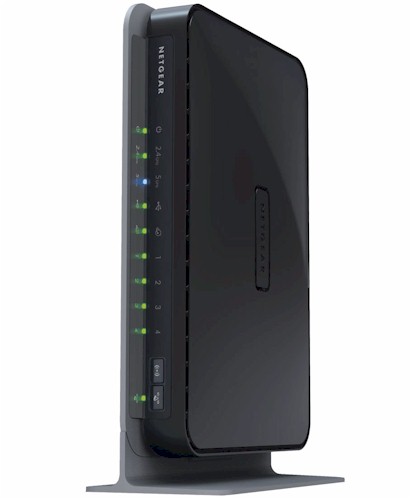
| At a Glance | |
|---|---|
| Product | NETGEAR N600 Wireless Dual Band Gigabit Router (WNDR3700v2) |
| Summary | Hardware revison of popular Atheros-based dual-radio, dual-band 802.11n router with Gigabit ports and media-enabled USB drive sharing. |
| Pros | • High routing throughput • Wireless Guest networks • WDS Repeating / bridging • Good wireless throughput stability • USB drive sharing with UPnP AV / DLNA server |
| Cons | • Lower performance than v1 in 5 GHz band • Still only 4096 maximum simultaneous sessions |
It’s been a little over a year since NETGEAR starting shipping what has become its flagship 802.11n router, the WNDR3700. Judging from the SNB web traffic, there has been more sustained interest in this router than perhaps any other router that I’ve reviewed.
There has been the usual speculation about the first hardware revision of NETGEAR’s best-selling WNDR3700 dual-band N router. While most people hope for improved performance, hardware revs are usually more about cost-reduction and less often address design flaws.
The WNDR3700v2 seems to be about the latter approach with two key changes. First, it increases flash memory from 8 to 16 MB. And second, it has changed the antenna configuration for the 5 GHz radio.
Other than that, the WNDR3700v2’s design remains an Atheros-based design using an AR7161 Wireless Network Processor and 2.4GHz/5GHz AR9220 and 2.4GHz AR9223 radios. The Realtek RTL8366SR Gigabit switch also is unchanged. So let’s get to what’s different.
Figure 1 is an FCC photo that shows the two new "patch" style antennas that flank the top front left corner of the router. These attach to connectors on the main board that were also present on the Rev 1 board.
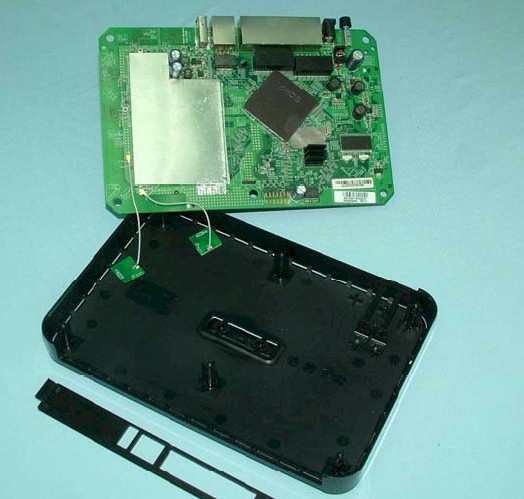
Figure 1: WNDR3700v2 inside view
Figure 2 is a closeup of the v2 board. Pay attention to the left edge of the board, which is where the key changes are.
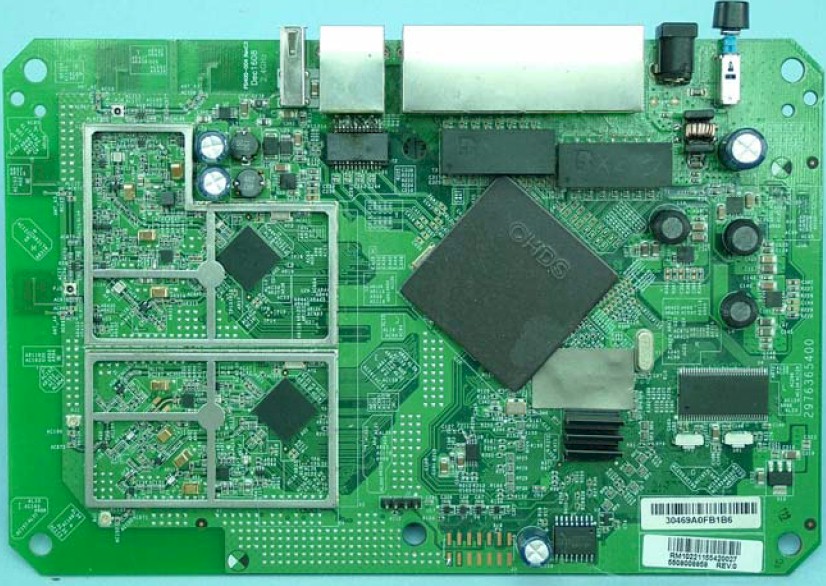
Figure 2: WNDR3700v2 board top
Comparing Figure 2 to the view of the original WNDR3700 revision (v1) board in Figure 3, you see the same four mini (Hirose U.FL if I’m not mistaken) antenna connectors, two each for the 2.4 and 5 GHz radios. If you look closely, you can also see that the etched metamaterial antennas for the 5 GHz radio have been removed.
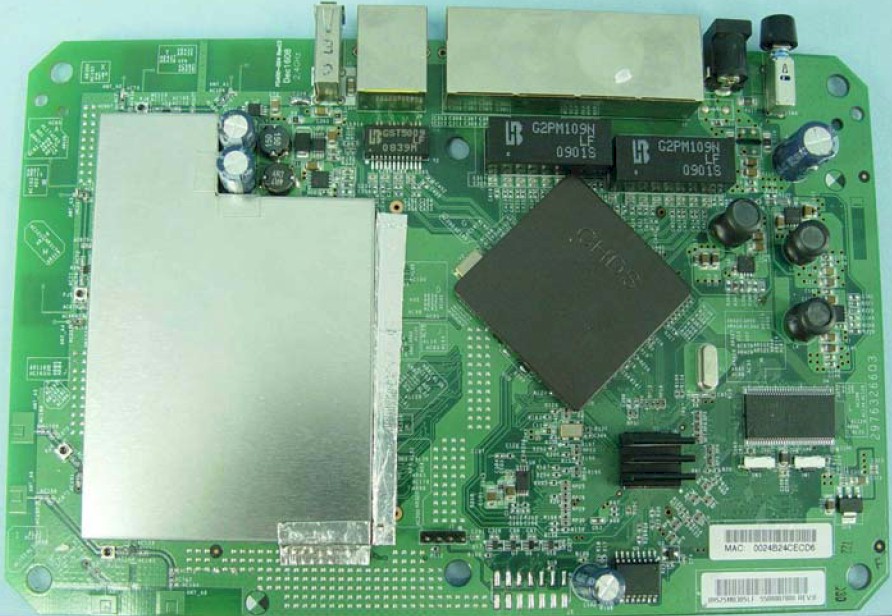
Figure 3: WNDR3700v1 board top
Checking the bottom side of the boards, we see similar, although more subtle, changes, clearing away vestiges of the on-board 5 GHz antennas.
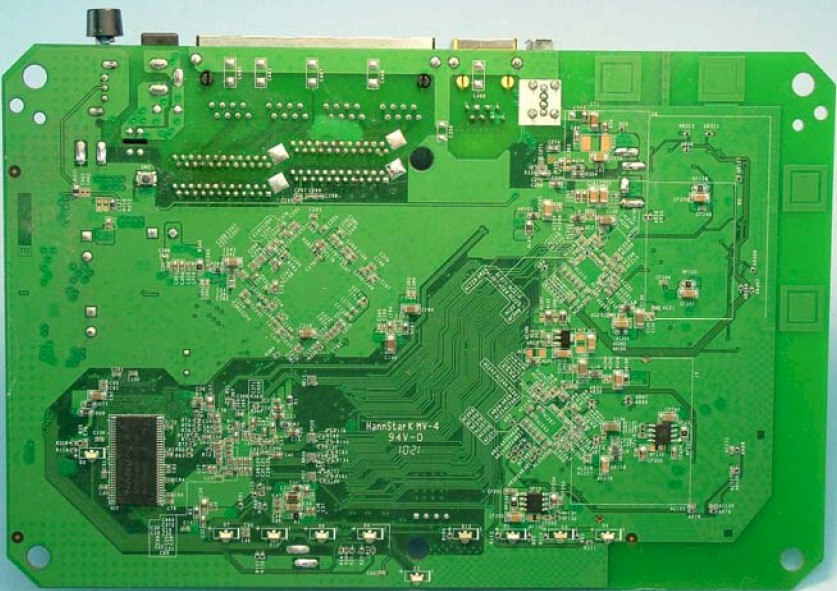
Figure 4: WNDR3700v2 board bottom
All the board images are clickable for a larger view. Right click on them if you want to open the larger image in a new browser tab or window.
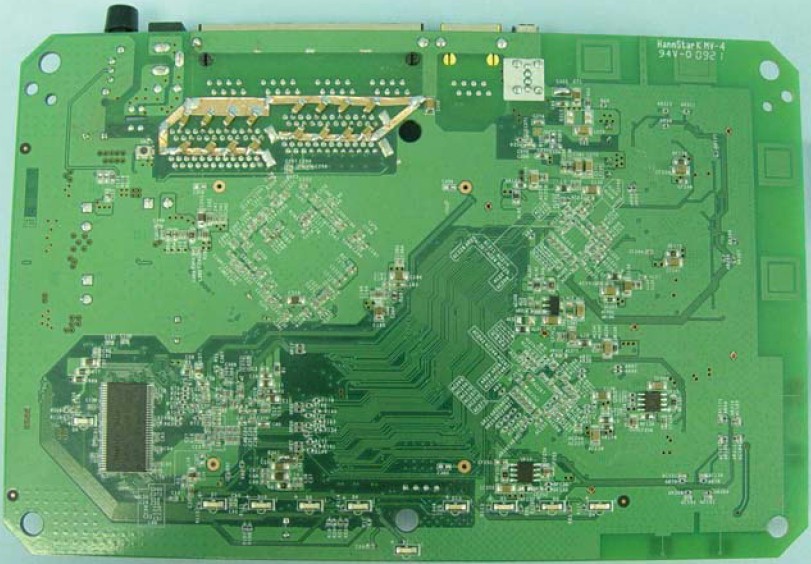
Figure 5: WNDR3700v1 board bottom
The v2 came in a red-themed box that was new to me, although it may have changed sometime over the past year or so. Pay no attention to the "N600" in the revamped product name.
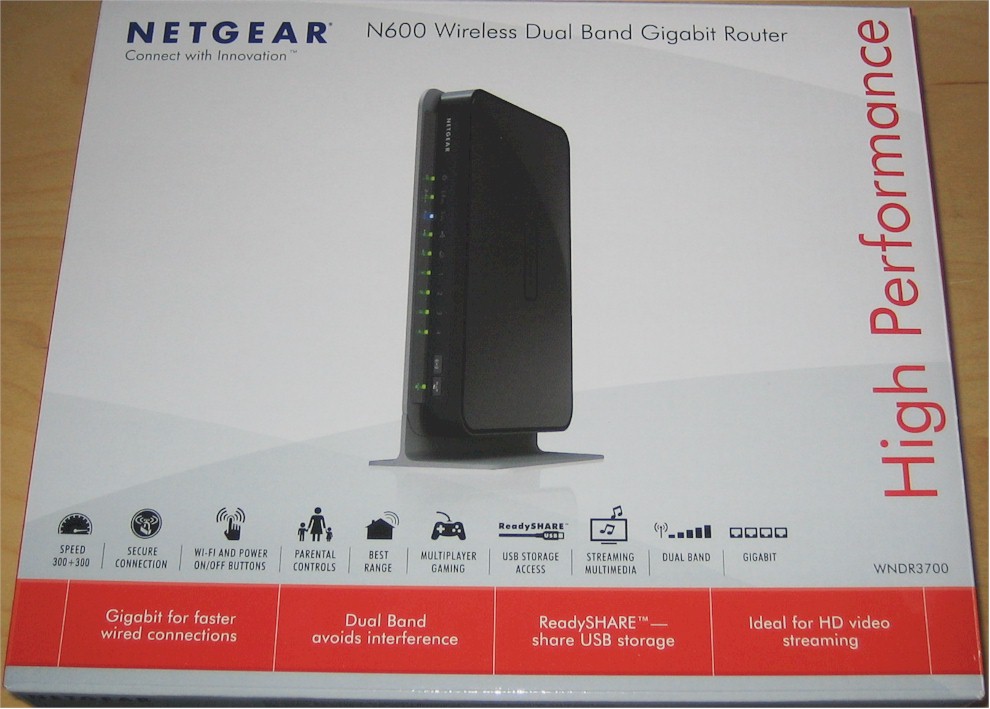
Figure 6: WNDR3700v2 box
That’s just NETGEAR’s way of fooling folks who don’t know better into thinking they are getting a faster router than ones with "300" or "450" in their names. (No, Virginia, you can’t get your dual-band client to show a 600 Mbps link rate no matter what you do.)
Feature Differences
I haven’t been updating the firmware of the WNDR3700v1 that I use as my main router. So these observations are based on changes seen between version V1.0.4.55NA firmware on the v1 and V1.0.0.6 firmware on the v2.
The first thing I noticed was the removal of support for WEP security for the main SSIDs when I went to check fallback to 54 Mbps link rates when it was used. Figure 7 shows the central frame of the Wireless Settings page.
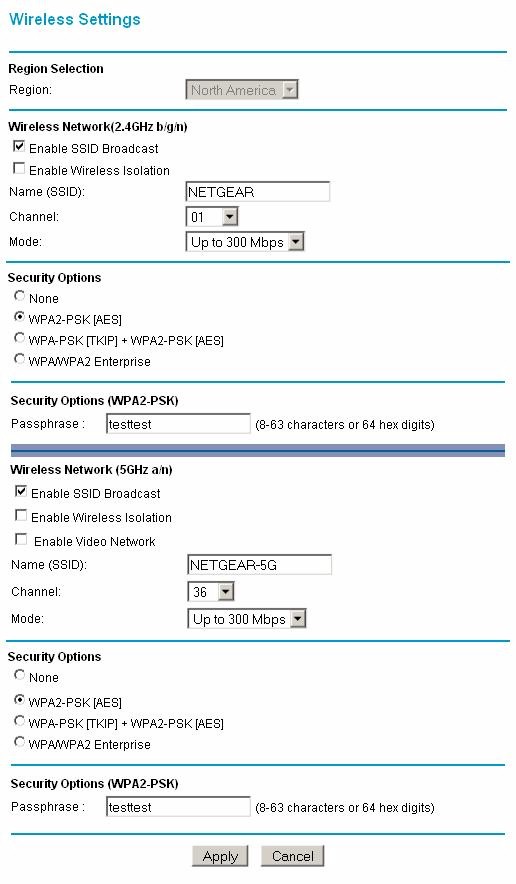
Figure 7: WNDR3700v2 no WEP
Curiously, WEP does appear as an option in the Guest network settings, along with a new Wireless Isolation option, as shown in Figure 8. The online help hasn’t been updated to describe the latter. But Wireless Isolation usually prevents wireless clients from accessing or seeing each other.
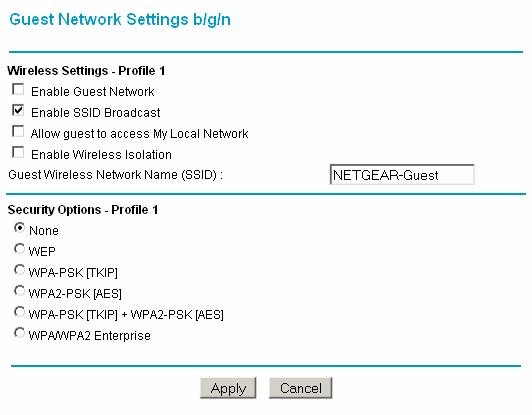
Figure 8: WNDR3700v2 Guest network settings
What hasn’t changed much is the ReadyShare USB drive sharing features or performance. The only feature difference I could see is the removal of the scheduled scan setting for the DLNA sever, leaving only the Automatic scan option.
To test performance, I once again connected the Iomega UltraMax Pro dual-drive RAID 0 configured NAS that I use for NAS backup testing and ran the filecopy test from the NAS test suite. With the Iomega drive NTFS formatted, I measured only 3 MB/s writing and 12 MB/s reading. When I reformatted the Iomega as FAT32 and reran the filecopy, performance improved to 12 MB/s writing and 14MB/s reading.
Other changes I found include:
- Filters for the Logs
- Addition of Guest Network information to the Router Status page
- Addition of wireless devices to the Attached Devices page
- Renaming of Disable SPI Firewall to Disable Port Scan and DoS Protection on the WAN Setup page
- Addition of a Automatic uplink bandwidth check option to the QoS Setup page
- Addition of IPv6 support
That last bullet is perhaps the most significant, even if most US ISPs don’t yet use IPv6 on their networks. The v2 supports 6 to 4 tunnel, Pass Through, Fixed, DHCP, PPPoE or auto detect WAN types. Figure 9 shows the Fixed type entry screen.
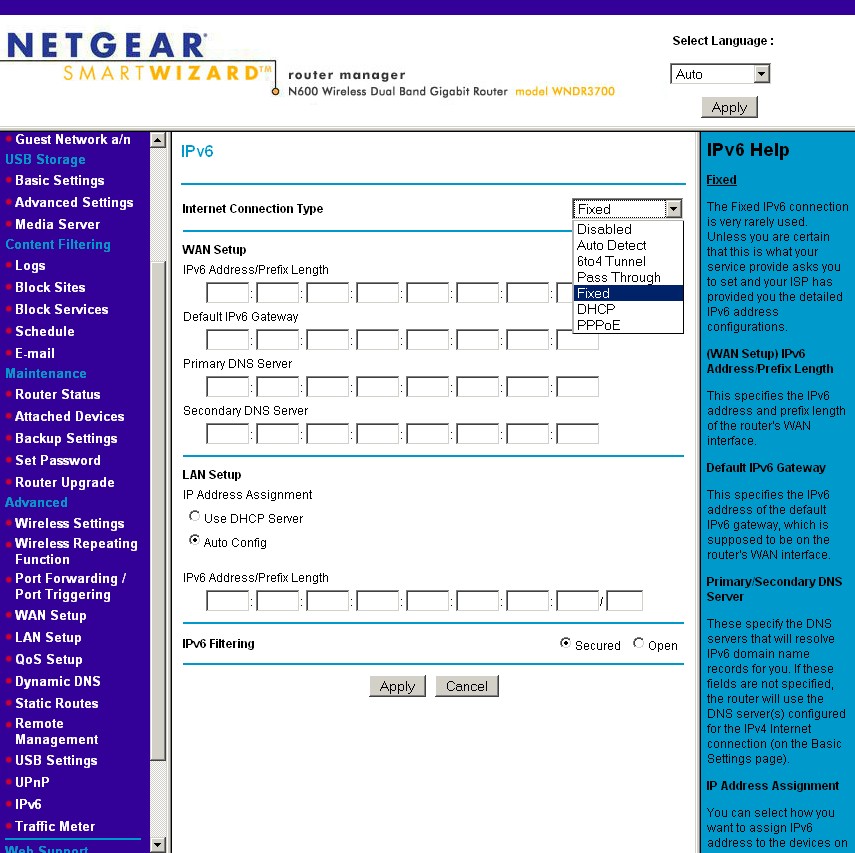
Figure 9: WNDR3700v2 IPv6 settings
Routing Performance
Routing throughput running the latest 1.0.0.6 firmware measured in the low 400 Mbps range in both directions and mid 400 Mbps range for both WAN to LAN and LAN to WAN tests running simultaneously.
| Benchmark | WNDR3700v2 | WNDR3700v1 |
|---|---|---|
| WAN > LAN | 429 | 409 |
| LAN > WAN | 420 | 422 |
| Total Simultaneous | 469 | 474 |
| Maximum Simultaneous Connections | 4096 | 4096 |
Table 1: Routing throughput summary and comparison
Table 1 compares routing throughput for the v2 and v1, which are, for all intents and purposes equal.
The IxChariot plot in Figure 10 shows throughput isn’t rock steady. But it’s doubtful you’d notice the variations with most Internet services.
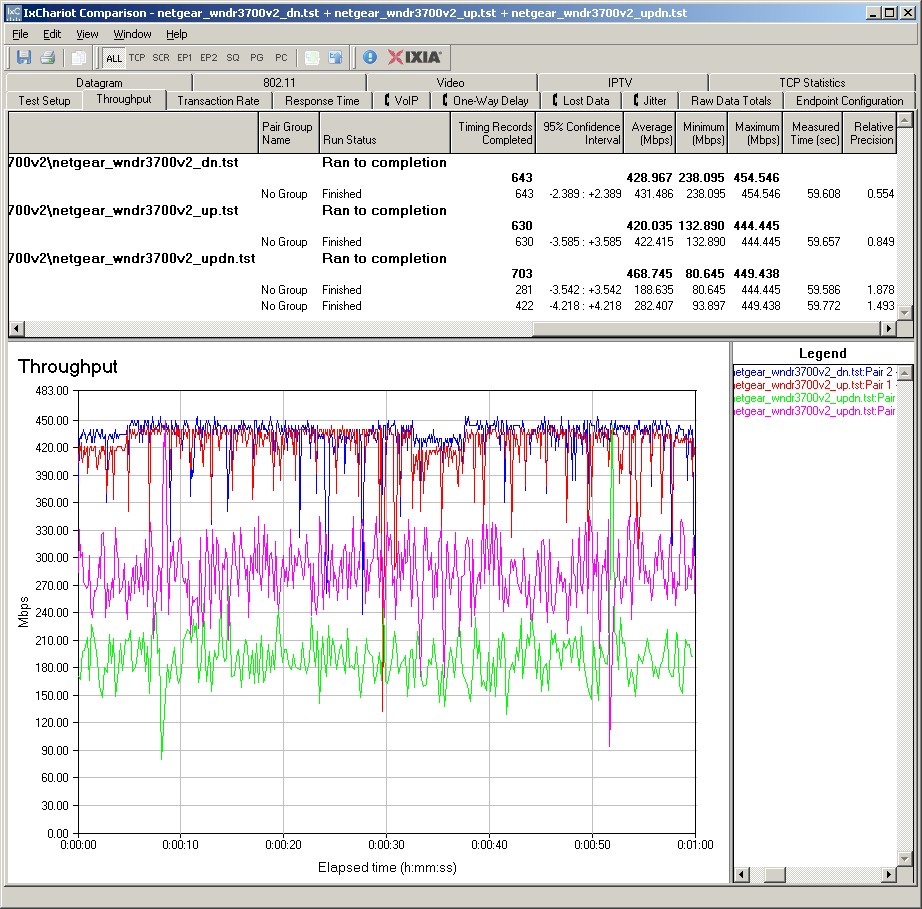
Figure 10: WNDR3700v2 routing throughput
Wireless Performance
The question in most buyers’ minds is whether the v2 has improved wireless performance. But, just as important, is whether performance has gotten worse. Unfortunately, it looks like the change in 5 GHz antennas yields has changed performance for the v2 vs. the v1.
I tested the v2 using our standard six-location open-air test. As usual, I set the 2.4 GHz radio to Channel 1 and the 5 GHz radio to Channel 36. I’ve recently changed to running performance tests using WPA2 / AES encryption instead of no encryption, because that’s how Wi-Fi gear should be secured today, so that’s how the v2 was configured. I left all other router defaults in place.
The test client was an Intel Wi-Fi Link 5300 AGN mini-PCIe card. For the v1, the card was in a Dell Mini 12 running WinXP Home SP3 and using Intel’s Win XP 12.4.3.9 driver. For the v2, I used an Acer Aspire 1810T notebook running Win 7 Home Premium and Intel’s Win 7 13.4.0.9 driver for the Intel card, because I recently switched to that platform, again to more accurately reflect current usage patterns.
I ran a Wireless Performance Table comparison for the v1 and v2 and split it into 2.4 and 5 GHz band results, shown in Figures 11 and 12. For each test location (A through F), the higher throughput is highlighted in yellow. If both readings are within 1 Mbps of each other, both are highlighted. Then the product with the most location highlights is itself highlighted. If both products have the same number of highlights, then both products are highlighted.
For the 2.4 GHz band, v1 and v2 are tied for three of the four benchmarks run, with the fourth benchmark (40 MHz mode, uplink) going to the v1.
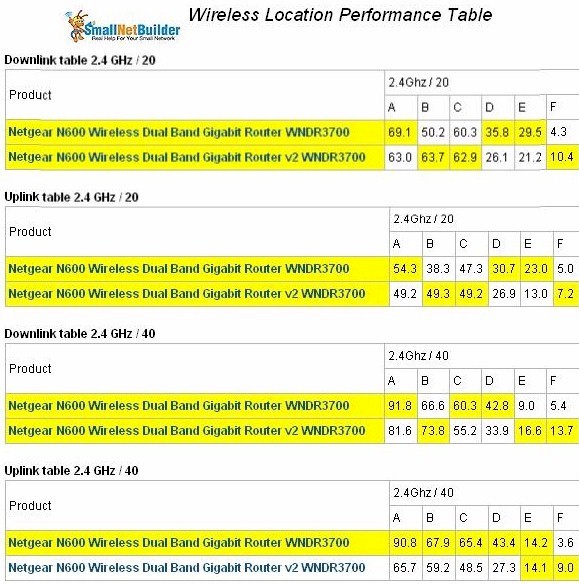
Figure 11: WNDR3700v1 and v2 wireless performance comparison – 2.4 GHz
For the 5 GHz band, the v1 wins for all four benchmarks, consistently yielding higher throughput particularly in the medium signal locations C and D. Note that neither router managed to even be detected by the client in our dead-zone locations E and F.
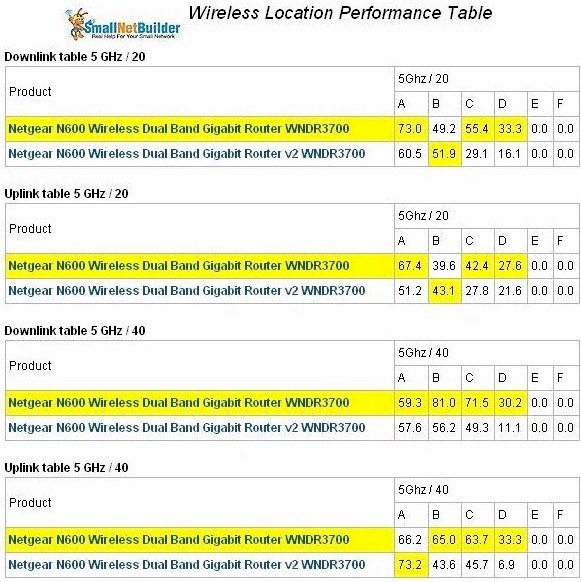
Figure 12: WNDR3700v1 and v2 wireless performance comparison – 5 GHz
Here are links to the IxChariot wireless test plots if you’d like to explore further:
- 5 GHz / 20 MHz downlink
- 5 GHz / 20 MHz uplink
- 5 GHz / 20 MHz up and downlink
- 5 GHz / 40 MHz downlink
- 5 GHz / 40 MHz uplink
- 5 GHz / 40 MHz up and downlink
Wireless Performance – more
The nice thing about most of the plots is that they show relatively steady throughput, generally devoid of big periodic throughput dropouts that wreak havoc with high def video streams. The exception is shown in Figure 13.
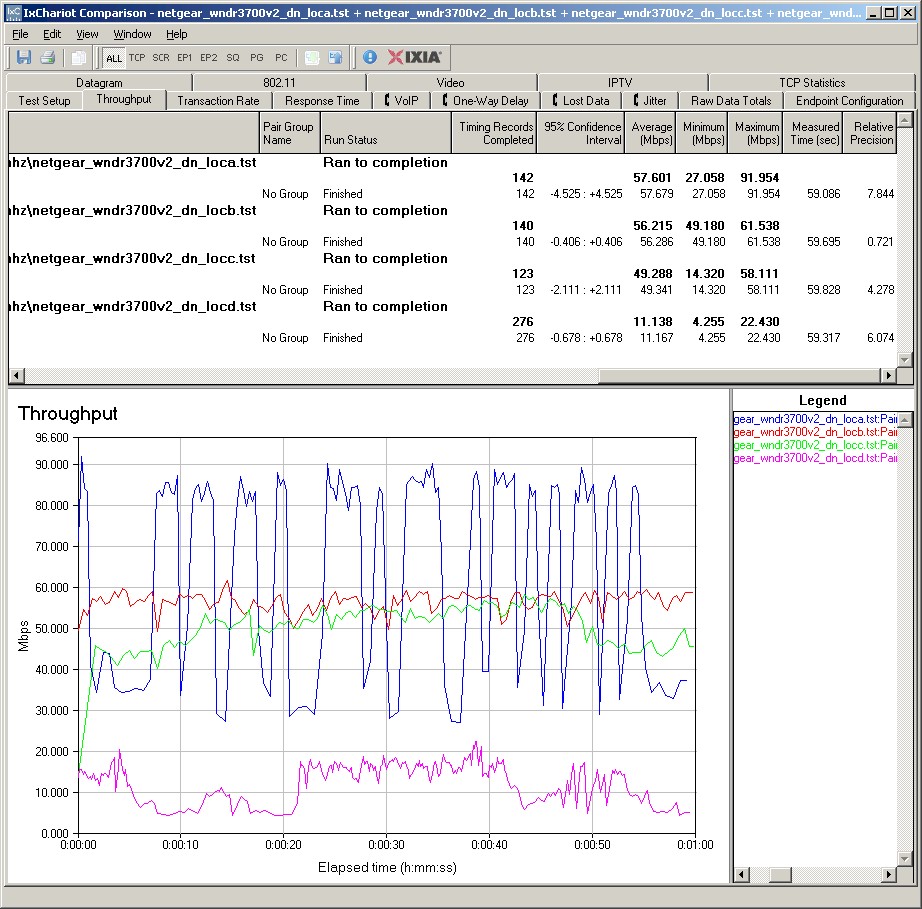
Figure 13: WNDR3700v2 wireless throughput summary – 5 GHz downlink, 40 MHz mode
The Location A plot shows very unstable throughput, which could be caused by receiver overload. But this plot was taken at the same exact location as the 20 MHz mode plot, which was the recommended minimum 10 feet away from the router and showed no sign of this throughput variation.
I frankly was puzzled why the v2 had weaker 5 GHz band performance, so quickly reran a few tests as a spot check and got essentially the same results. I then figured I’d better go back and try the Dell Mini 12 notebook used in the original WNDR3700 test, to see if it somehow figured into the mix. Note that the Intel driver had been updated a few times since the original v1 test and now was 13.3.0.24.
That exercise turned out to be a longer one than I thought. My first run showed even lower throughput, with throughput in most locations loping along in the 30 Mbps range. I finally rebooted both the Dell netbook and the v2 and got what I thought were better numbers.
But when I gathered the results together into aggregate plots, it turned out that I just got different numbers with some better results and some worse. Tables 2 through 5 pull all the data together so you can compare for yourself.
| Test | A | B | C | D |
|---|---|---|---|---|
| WNDR3700 v1 | 73.0 | 49.2 | 55.4 | 33.3 |
| WNDR3700 v2 – Chart data | 60.5 | 51.9 | 29.1 | 16.1 |
| WNDR3700 v2 – Dell Mini | 54.0 | 47.1 | 39.5 | 40.7 |
Table 2: 5 GHz band throughput comparison – Downlink, 20 MHz
| Test | A | B | C | D |
|---|---|---|---|---|
| WNDR3700 v1 | 67.4 | 39.6 | 42.4 | 27.6 |
| WNDR3700 v2 – Chart data | 51.2 | 43.1 | 27.8 | 21.6 |
| WNDR3700 v2 – Dell Mini | 52.4 | 48.9 | 30.5 | 28.5 |
Table 3: 5 GHz band throughput comparison – Uplink, 20 MHz
| Test | A | B | C | D |
|---|---|---|---|---|
| WNDR3700 v1 | 59.3 | 81.0 | 71.5 | 30.2 |
| WNDR3700 v2 – Chart data | 57.6 | 56.2 | 49.3 | 11.1 |
| WNDR3700 v2 – Dell Mini | 47.2 | 52.1 | 40.2 | 26.6 |
Table 4: 5 GHz band throughput comparison – Downlink, 40 MHz
| Test | A | B | C | D |
|---|---|---|---|---|
| WNDR3700 v1 | 66.2 | 65.0 | 63.7 | 33.3 |
| WNDR3700 v2 – Chart data | 73.2 | 43.6 | 45.7 | 6.9 |
| WNDR3700 v2 – Dell Mini | 63.5 | 50.7 | 46.0 | 27.0 |
Table 5: 5 GHz band throughput comparison – Uplink, 40 MHz
Here are links to the tests using the Dell Mini 12 client if you’d like to see for yourself.
- 5 GHz / 20 MHz downlink
- 5 GHz / 20 MHz uplink
- 5 GHz / 20 MHz up and downlink
- 5 GHz / 40 MHz downlink
- 5 GHz / 40 MHz uplink
- 5 GHz / 40 MHz up and downlink
I didn’t rerun any of the 2.4 GHz tests since my initial testing showed that the v2’s 2.4 GHz band performance is essentially unchanged, which is what I would expect given no changes to the radios or antennas.
Closing Thoughts
It’s not like you’re going to have a choice between v1 and v2 routers, at least not for much longer. NETGEAR said that v1 inventory has been moving through the channel nicely and v2s are already in the pipeline. So sometime in the near future, if you want a WNDR3700, it’ll be a v2.
The WNDR3700 has been a good choice for folks looking for a good simultaneous dual-band router and probably still is. The combination of high routing speed, wireless features including multiple SSIDs and WDS bridging / repeating and decent wireless performance on both bands made it a good bet. The v1 was never the best performer in the 5 GHz band, however, and now the v2 is a bit less so.
Fortunately, the new routers that NETGEAR introduced at CES will be hitting the shelves in a few months (if NETGEAR doesn’t slip schedule as they have with past CES intros). And then there’s the Cisco Linksys E4200 that is sitting on the bench behind me waiting to be fired up. So we’ll soon see if 2011 brings us any closer to the perfect dual-band 802.11n router.
